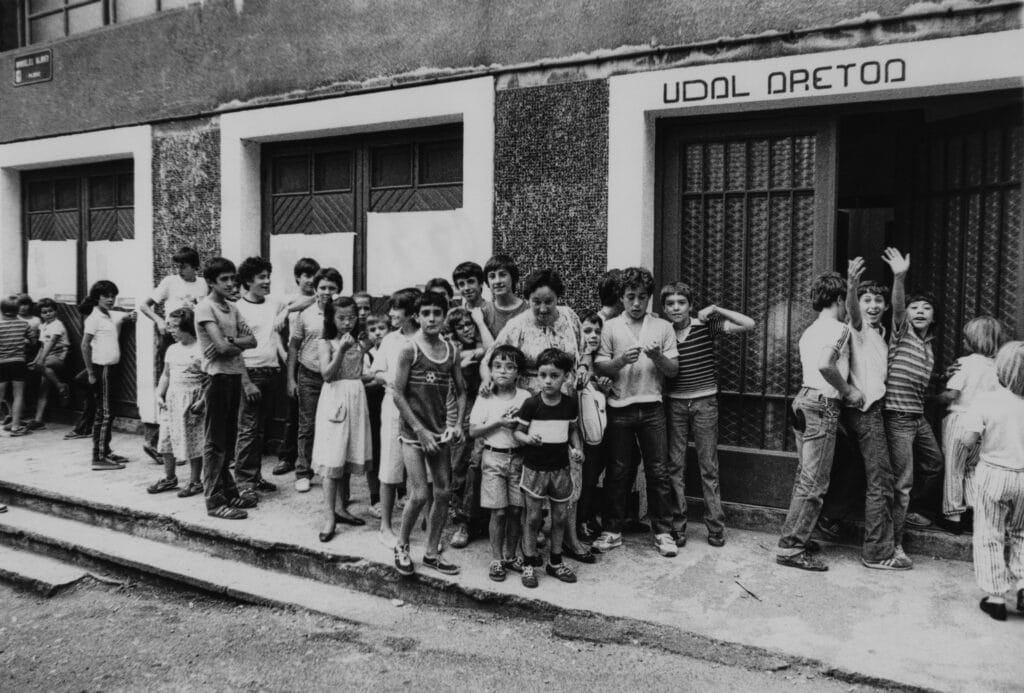Organized by
In collaboration with
Sponsored by

Following the death of Franco in 1975, the San Sebastian International Film Festival went through one of the most vibrant and turbulent periods of its history, in a decade marked by experimentation and the transition to democracy but also by considerable instability.
This exhibition created by the research project team focuses on some of the moments of disruption in those years through photographs conserved in the San Sebastian Film Festival archive and the Kutxateka collection.
The stormy edition of 1976, marked by protests following the killing of the pro-amnesty demonstrator Josu Zabala at the hands of the Civil Guard, made it clear that the Festival - fossilised after almost three decades under Franco - could not continue in its traditional form. In 1977, its management was taken over by the city of San Sebastián and the Steering Committee welcomed new voices: anti-Franco artists such as Nestor Basterretxea or Eduardo Chillida, representatives of neighbourhood associations and film clubs, and key figures like José Ángel Herrero-Velarde and Luis Gasca who made great efforts to help the Festival survive like.
At that time, San Sebastian became a point of encounter and homage to filmmakers who had been exiled and censored during Franco’s time. The Festival broke with its elitist tradition and democratised the audience by extending screenings and Q&A sessions to working-class neighbourhoods and municipalities all over the Basque Country, through the section titled “Barrios y Pueblos.” The screens opened up to new aesthetic and political codes through the programming of younger filmmakers such as Iván Zulueta or Pedro Almodóvar, and the Festival pursued new cinematic languages through pioneering initiatives such as Festival Video, created and directed by Guadalupe Echevarria from 1982 to 1984. All this took place while the cinemas in the city became soundboxes of society’s struggles, from the Basque conflict to the civil disobedience movement, the denouncing of Latin American dictatorships and the demands of feminist and LGTBIQ+ groups.
In 1980, the International Federation of Film Producers Associations (FIAPF) withdrew the Festival’s “A” category status, which it did not recover until 1985. Although this period has usually been described as one in which the Festival ‘lost’ its status, the aim of this exhibition is different: to encourage people to think of those years of change as a crucial time when the groundwork was laid for many of the distinguishing features of the present-day San Sebastian Film Festival.
Curation and research: Pablo La Parra Pérez and Irati Crespo Manjarrés
Documentation and cataloguing: Ana E. Redondo, Arantxa Giga, Andrea Sánchez and Lorena Soria.